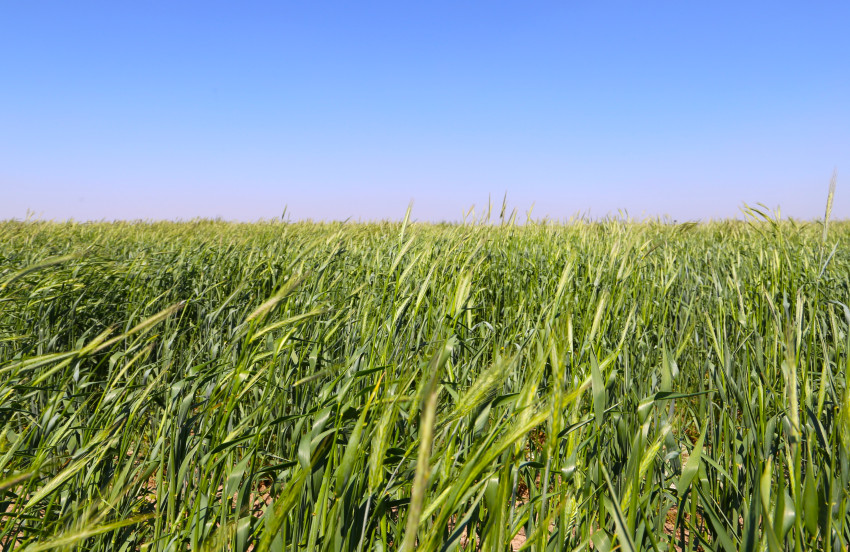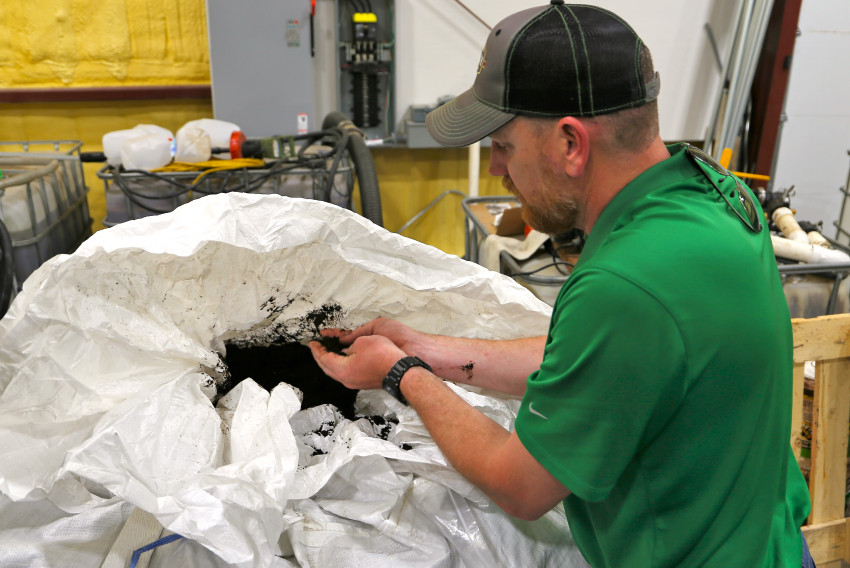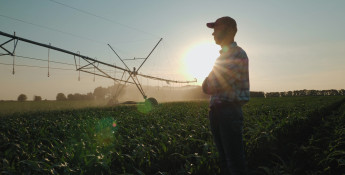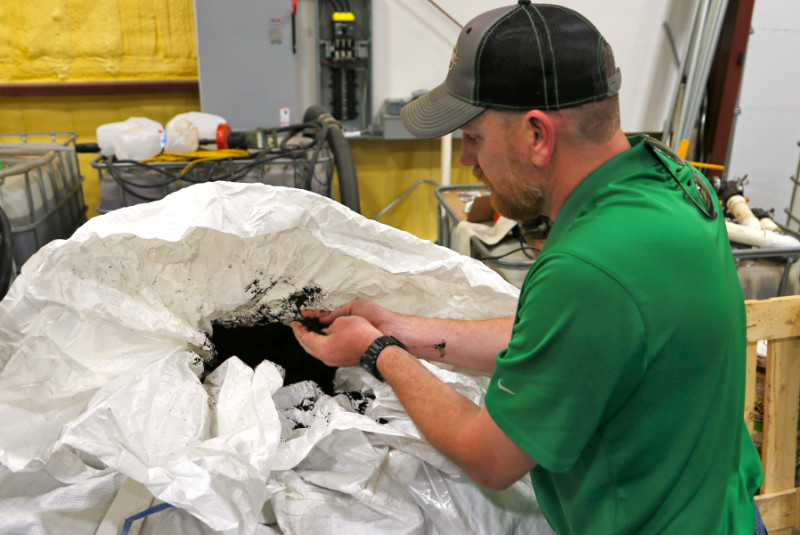By Greg Doering on August 2, 2022
Water Conservation at a Kansas Cattle Feedlot
At Tiffany Cattle Company, quality is a byproduct of profitability
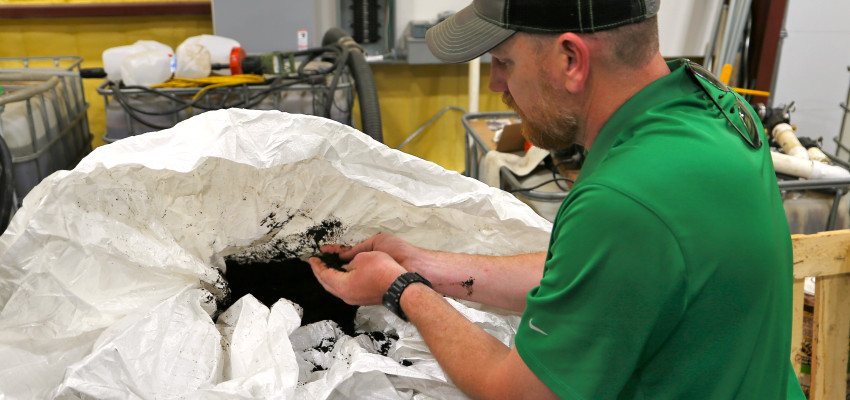
At the confluence of the Mississippi River and the Gulf of Mexico is a 3-million-acre landmass of sand, clay and soil carried from the interior U.S. between the Appalachians and Rockies. As long as the Mississippi and its tributaries have existed, they’ve carved and shaped the landscape through both erosion and deposition. Bits of silt etched from alpine peaks in Colorado were layered over the floodplains of the Kansas River creating a fertile valley, while other debris was suspended in rushing water all the way to the delta in the Gulf.
This sediment is part of a natural cycle of destruction and recreation on landmasses across the globe that continues to this day, meaning it’s impossible to judge the quality of a river’s water based on color alone. Some streams run clear while others are a murky brown. William Clark observed in 1804 the Missouri River carried about half a wine glass of “ooze or mud to every pint” of water.
When people talk about water quality today, it’s not a reference to the sand and soil carried in rivers and streams, rather it’s a measure of how much, or little, modern life contributes to what goes downstream. Runoff from storms will carry oil and grease from city streets or nutrients from lawns and farm fields into lakes and rivers, causing a variety of unintended side effects from pollution to rapid growth of moss and algae.
While farmers and ranchers share the same water quality concerns as everyone else, they have the additional incentive to limit costly fertilizer from being washed away from their fields.
There’s a wide range of practices to keep these nutrients in place. In Kansas, these practices vary greatly with the amount of rainfall; runoff is less of a concern in the northwest than it is in southeast portions of the state.
QUALITY IS IMPORTANT AT THIS KANSAS FEEDLOT
Shawn Tiffany says he has not sold a bushel of wheat since 2016. Instead, Tiffany says, he aims to grow the best wheat he possibly can and market it for the protein value, but that’s only part of the reason he sees wheat as a crop that adds tremendous value to his operation.
“Wheat is a great crop since we can utilize it in many ways,” Tiffany says. “We can graze cattle on wheat in the winter, let it mature to grain in the summer, collect some of the straw post-harvest, then go back and plant sorghum on the same field after the wheat is out. So I’m getting four crops off every acre.”
The sorghum Tiffany plants after wheat is cut for silage — which means it’s cut before it’s dried down and turned into a digestible addition to a beef animal’s feed ration. Not only is this a feed source for livestock, it is also part of a smart rotation of crops.
Tiffany and his brother, Shane, operate Tiffany Cattle Co. across three locations in central Kansas. The feedlots have a capacity for nearly 35,000 head of cattle, and they graze an additional 10,000 to 12,000 on grass each summer. The brothers raise 100 percent of the silage fed in their stockyards, along with about half the hay and a significant percentage of the corn.
Shane is charged with running the livestock portion of the operation and Shawn is responsible for crop and feed management decisions. Together the Tiffanys benefit from a coordinated operation where they raise feed for cattle, which then produce manure that’s applied back on the fields, raising the feed again in a continuous cycle. It’s not a closed loop by any means, but Shawn is working on that, too.
GROWING CROPS AND CATTLE
In the fields surrounding Tiffany Cattle Co.’s Herington facility, runoff is one of Shawn’s primary concerns. Not necessarily because it could be carrying precious soil and nutrients away, but because he’d much rather that water go into growing grain and forage.
Every field is either planted to a cash crop, like corn, sorghum and wheat, or is in a cover crop 12 months out of the year. Farmers plant crops like rye, triticale, turnips and radishes after a crop like corn or soybeans is harvested. These kinds of cover crops prevent erosion and play an important role in how rain falls on the soil, how deep it infiltrates and how long moisture stays in the ground.
Shawn says they started introducing cover crops in 2010 after attending a field day to learn about using them in a grazing system. Over the years, the use of cover crops has evolved as the Tiffanys’ understanding of their value grew.
“We’ve been in continuous cover crops on every acre since 2019,” Shawn says. “We are open to trying new things and new ideas, but we take our time and analyze research and data before we just go all in.”
For evidence of how effective cover crops are, Shawn points to the late spring of 2021 when it got hot and dry right after Memorial Day. It didn’t rain for more than three weeks and there were 10 days of 100-degree temperatures in that span as well.
“I grabbed a shovel out of the back of the truck to see how many more days that crop could survive without rain,” Shawn explained. “I got down four inches and it was muddy. That’s three weeks with no rain and terrible temperatures during the time of year when you get your most beneficial rains.”
IMPLEMENTING COVER CROPS
Shawn cautions that flexibility is a key component of implementing cover crops, and the benefits aren’t always immediate because the risks are higher. Since cover crops are planted into a field that was just harvested, there’s a narrow window between planting the cover crop and the first frost. That time is important for them to become established.
Cover crops do better in some fields than others, so farmers have to weigh their potential benefits against the cost of labor, seed and fuel needed to plant them. Even when those costs make sense, a good backup plan is probably wise, Shawn says.
“I have not been able to graze covers the last three years because it’s been too dry,” he says. “But what I’ve done is gone back in the spring and chopped silage on a percentage of it or baled hay on a percentage of it.”
TESTING SOIL TO SEE ITS BIOLOGY
There’s a fifth crop Shawn didn’t count when talking about the benefits of including wheat in his crop rotation: soil.
The Tiffanys test every acre of soil twice each year. A fall sample is required by the state as part of the requirements of running a feedlot to ensure waste from the cattle isn’t affecting the surrounding surface or groundwater. In the spring, Shawn explains, they go back and test just ahead of planting.
“I want to know what kind of biology is going on in the soil right ahead of the planter,” he says. “What those samples allow us to do is know the true biological activity in our soil and how it’s cycling nutrients.”
Because the Tiffanys use manure from their feedlot operation on their crop fields, they don’t normally need to apply additional elements on their fields. Sometimes additional phosphorus or potassium is needed to enhance plant performance, such as root growth or to help fight plant diseases. Shawn is working to make sure there are beneficial microorganisms that are doing their part to lessen dependence on manmade pesticides, herbicides and fertilizers.
“We still use synthetic fertilizers, but I’m not nearly as dependent as some people are,” Shawn says. “The Flint Hills pasture doesn’t require any input beyond a ruminant animal, some fire and hopefully a rain. It’s not like we’re having to put all kinds of chemicals out there for it to be a very, very productive ecosystem.”
Shawn is working to build a similar ecosystem in his crop fields, but like the implementation of cover crops at Tiffany Cattle Co., it won’t happen overnight. It requires testing, application and evaluation.
“Soil should be living,” he says. “It should just be teeming with life. If you’re feeding that life, then it becomes self-sufficient to a degree.”
To achieve that self-sufficiency, Tiffany Cattle Co. is an investor in a biological company and manufactures some of its products at the Herington facility. The biological amendments have almost completely replaced traditional fungicides and insecticides, helping create a healthier ecosystem for the plants, soil and insects.
QUALITY DRIVES PROFITABILITY
The Tiffanys’ dedication to quality, whether it’s wheat, corn or cattle, is driven by the higher compensation they receive from growing a premium product. Sometimes the tradeoff is growing something at lower quantity but higher caliber.
“That doesn’t mean yield isn’t important to me,” Shawn says. “But I want to raise a better-quality product and I expect to get paid for it.”
Producing a premium product on the scale of production agriculture requires working with nature more than against it. The better water quality that comes from strong management practices of both natural and manmade fertilizers is a bonus. The real reward comes in growing a better, stronger crop in healthier soil, with less impact on the environment.
Read more about Tiffany Cattle Co. at www.tiffanycattle.com.


